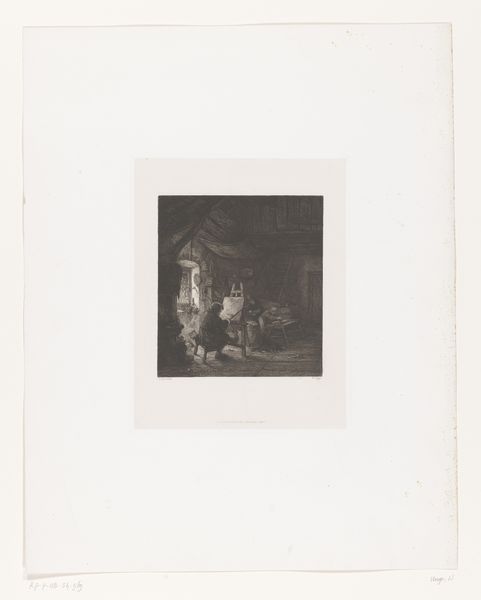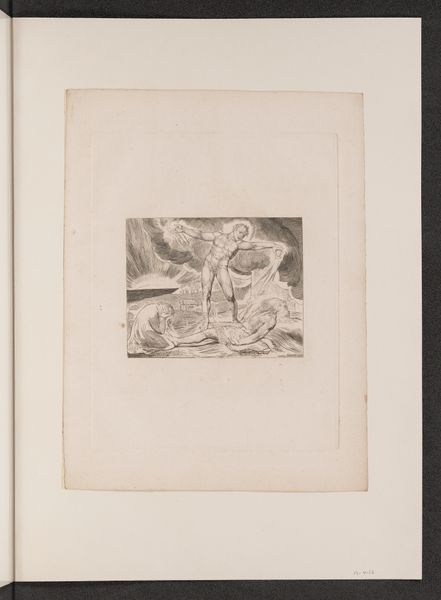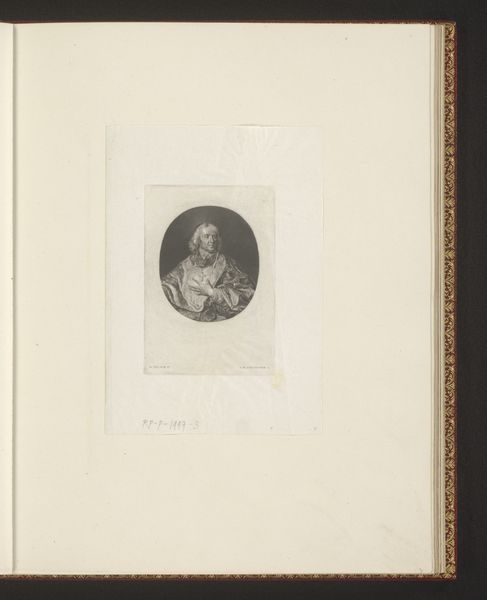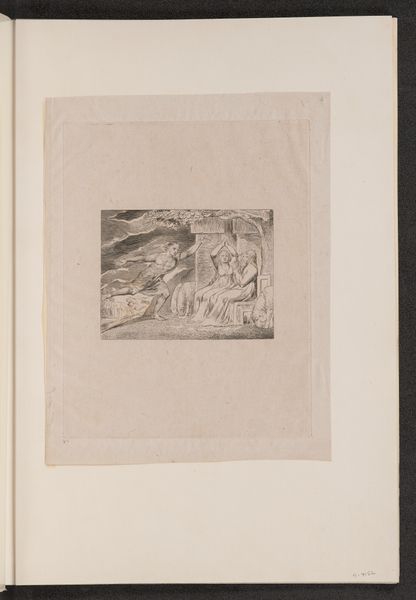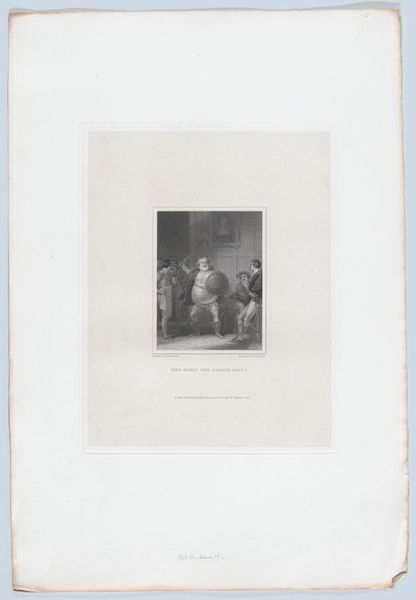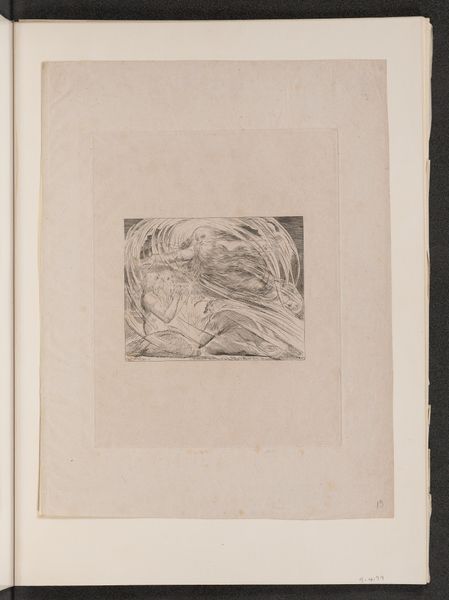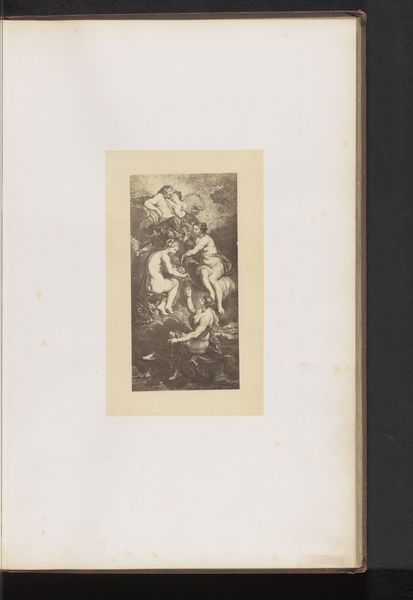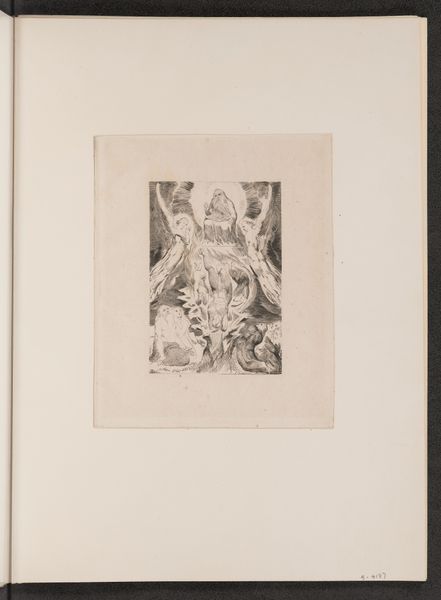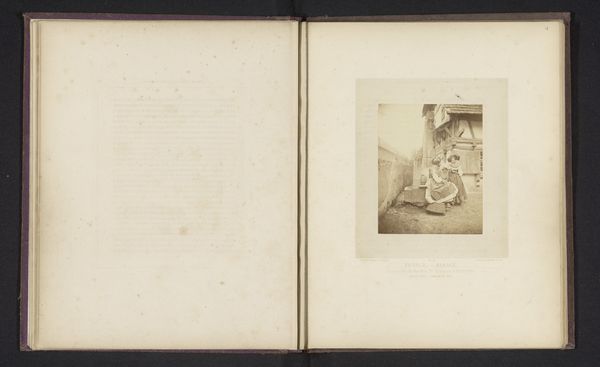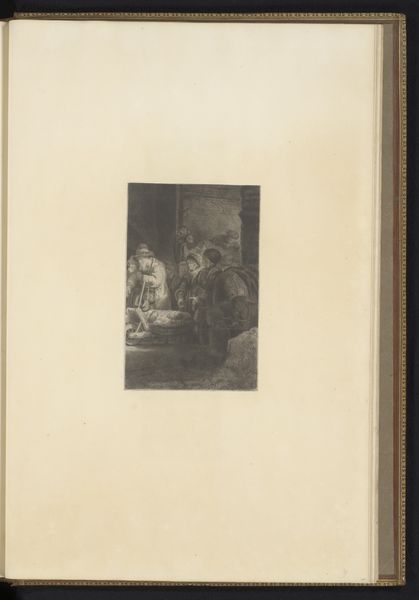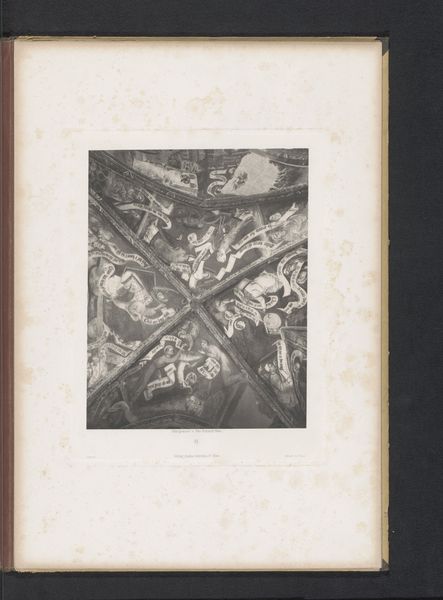
print, engraving
#
narrative-art
#
ink paper printed
# print
#
figuration
#
romanticism
#
history-painting
#
engraving
Copyright: National Gallery of Art: CC0 1.0
Curator: Before us is "Job's Despair," an engraving by William Blake from 1825. It portrays a scene of profound anguish. Editor: Yes, my immediate sense is one of stark desolation. The figures are contorted, and the etching style only amplifies that. It is emotionally raw, very powerful. Curator: The composition certainly evokes such emotions. Notice the central figure, Job himself, arms raised in what could be either supplication or futile defiance, framed against what appears to be an oppressive, looming structure. Blake uses stark lines to emphasize a palpable sense of enclosure. Editor: I'm thinking about what was accessible to Blake – the very limited and costly resources available to printmakers in that era. This intense drama relies almost entirely on the precise application of ink onto paper and the act of manually pressing those plates. The artist’s labor is visible in every mark, layering depth and texture. Curator: An interesting observation, that craft is central. Indeed, that physical process gives birth to a network of visual signifiers, if we parse this semiotically. The seated, grief-stricken figures beside Job—their downcast posture and shadowed faces communicating immense suffering and alluding to universal pain. Editor: It really makes you contemplate the process, too – that biting into metal and the sheer repetitiveness speaks to a dedication beyond market demands. Blake chose to employ and master techniques with incredible labor requirements when quicker alternatives were available; his artistic decisions feel as intrinsically tied to his own internal needs as the subject matter. Curator: That's well-put, you almost describe the materiality *as* the symbolism! Through Blake's strategic arrangement of figures and oppressive structures he gives visual form to internal, psychological anguish using form and design itself. Editor: Looking at “Job’s Despair” with fresh eyes brings focus back to understanding Blake’s materials, and their role in shaping enduring images of human grief. Curator: Yes, examining the relationships embedded into the artwork from material selection and deployment alongside design offers an entry to its enduring appeal.
Comments
No comments
Be the first to comment and join the conversation on the ultimate creative platform.
